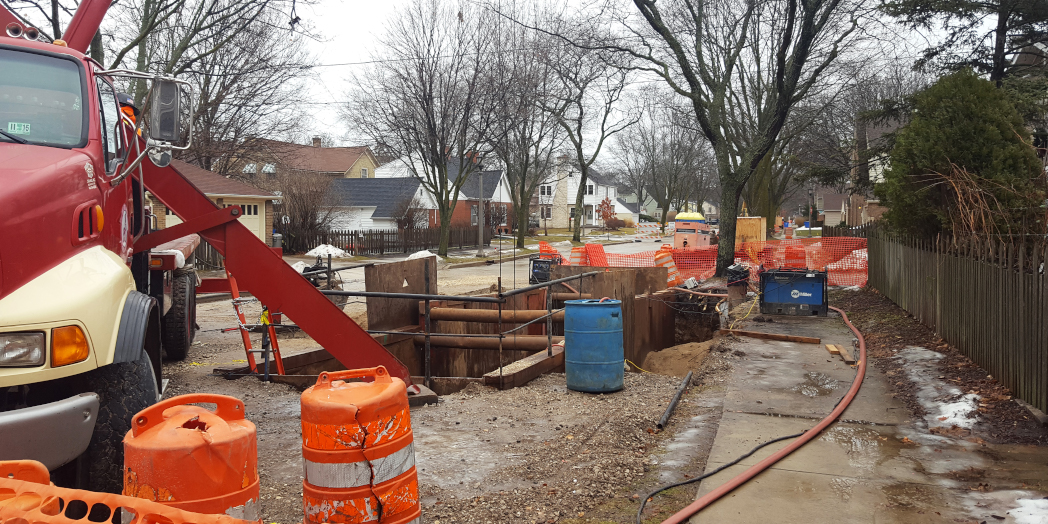Fairmount Avenue Relief Sanitary Sewer
Whitefish Bay, WI
For several decades, the sanitary sewer system in the Woodruff area of the Village of Whitefish Bay had a history of creating basement backups during heavy rains. Under pressure, the Village turned to Clark Dietz to come up with viable alternatives to prevent these backups. Clark Dietz performed a detailed computer analysis of the hydraulic capacity of the sanitary sewers and confirmed that the system had a low threshold for basement backup risks, indicating that intense rainfalls of 1.4 inches per hour or more could cause basement backups starting from near Fairmount Avenue and propagate north and south of Fairmount Avenue. An area larger than 80 acres with more than 400 homes was vulnerable to an elevated risk of property damage.
Clark Dietz developed several approaches, including sanitary sewer replacement and rerouting options. Clark Dietz considered upsizing existing sewers, as well as providing new sewer segments that reduce basement backup risks. Following our tradition of public involvement and community-based solutions, Clark Dietz organized resident information and participation meetings and collected opinions while continuously adjusting the Village’s response to resident expectations. The result was an optimized sanitary sewer design that increased hydraulic capacity, reduced backup risks, preserved most of the new pavement under which it was placed, and met State and local Sewerage District regulations and design guidance.
Clark Dietz also managed the public bidding, contractor selection and contract preparation. Throughout construction, Clark Dietz performed approximately 20 percent of the services with the remaining inspection services performed by the Sigma Group. Overall, Clark Dietz performed 100 percent of planning, public involvement and presentations, hydraulic modeling and analysis, design, and preparation of bid documents.
This trenchless sewer construction project was implemented in nine months from concept to completion, representing the confluence of community involvement, advanced hydraulic design, health and property preservation, and environmental stewardship.





















